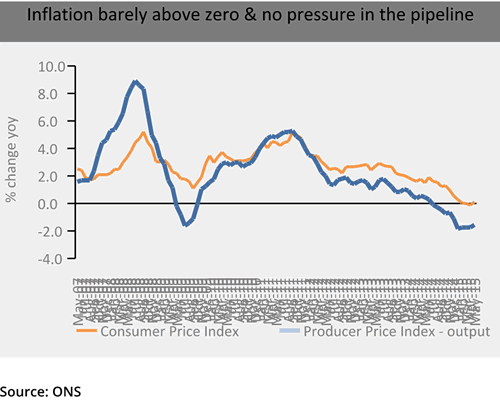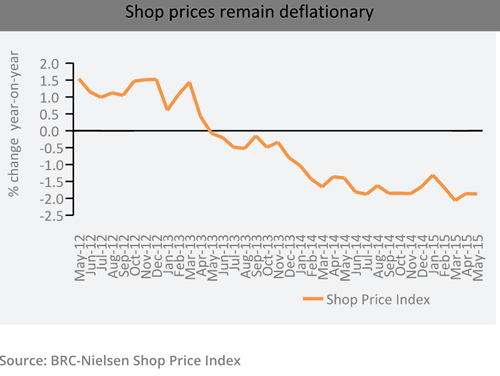After a brief period of deflation, prices rise marginally in May but the outlook remains muted
After the briefest period of deflation, the UK economy crept back to inflationary territory in May as prices rose by 0.1 per cent compared with the same period last year. The largest upward contribution to the change came from transport services, notably air fares with the timing of Easter in April a likely factor in the movement. There were also significant upward effects from food and petrol.

The largest offsetting downward effect came from recreation and culture, particularly games, toys and hobbies such as computer games and data processing equipment.
Overall weakness continues to reflect the impact of lower energy prices, food prices and the ongoing impact of lower import costs on core goods inflation.
Services inflation rose to 2.3 per cent in May, from 2.0 per cent in April, suggesting that more buoyant demand in other parts of the economy are maintaining inflation rates closer to the Bank of England target.
Overall, we expect inflation to remain around zero over the remainder of the year barring any shocks in commodity markets.
On balance, underlying pressure remains on the downside. Fierce competition in the grocery sector is unlikely to ease any time soon which means inflation will remain below average for some time yet. Grocers are cutting back on product lines to trim the fat out of operations and investing further on price promotions.
Commodity prices remain soft according to the Reuters-Jefferies CRB Index, a basket of commodities. Prices have continued to fall over the last few months suggesting there is little upward pressure in the supply chain.

Cooling demand in emerging markets has also eased commodity price rises.
Sterlings rise against the euro will keep downward pressure on imported food products.
However, there is still a long lead time on the full impact of these changes feeding through to supply given hedging on currencies, commodities and contracts.
On the non-food side, past falls in oil will continue to feed through the supply chain. The Producer Price Index was deflationary in May recording a 1.6 per cent fall in prices compared with last year so domestic price pressures also remain weak. This is the eleventh consecutive month to show deflation in factory gate prices.
The oil price futures curve reaches US$73 by 2018 Q2, but there are significant risks around that path.
Retailers margins have come under pressure from a rebound in the price of fuel and there are signed that wages pressures are also beginning to rise.
In the near term, pay growth is expected to strengthen, driven by the narrowing an erosion of slack in the labour market.
Petrol prices have now risen by c.10 per cent since January which is adding to operational costs.
Continued low inflation is supporting real wage growth in the consumer sector. Low inflation in food and transport is boosting households spending power.
Back to Retail Economic News